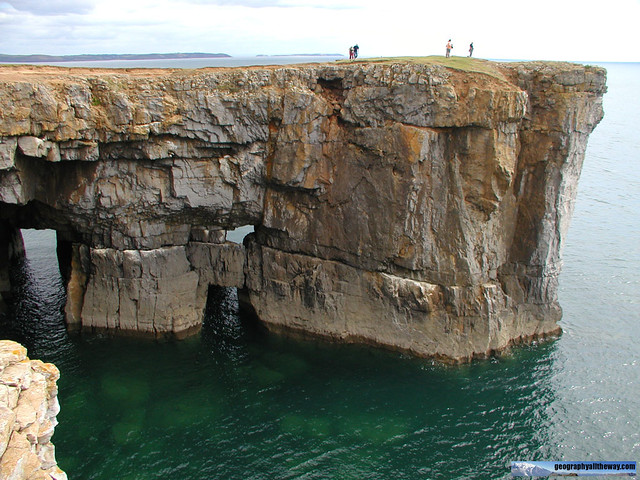Sea Stack Formation: Coastal Erosion and Geological Processes
Ever stared out at the ocean and wondered how those majestic pillars of rock, standing defiant against the crashing waves, came to be? The story of their creation is a tale of relentless forces, patient geology, and breathtaking beauty, a slow-motion ballet of destruction and endurance. Let's delve into the fascinating world of sea stack formation.
The Initial Attack: Coastal Erosion and Wave Action
The journey of a sea stack begins with the very foundation of the coastline: the cliff retreat. The primary sculptor in this process is the ocean itself, wielding the power of wave action. However, coastal erosion isn't just about brute force. It's a combination of several processes that work in concert to gradually dismantle the coastline. These include hydraulic action, abrasion, and weathering.
Hydraulic action is the sheer force of water compressing air into cracks and fissures in the rock. This pressure weakens the rock over time, causing it to fracture and break apart. The waves also hurl water and air with tremendous force. This intense water pressure weakens the structure of the rock.
Abrasion, also known as corrasion, is the sandpaper effect of waves carrying sand, pebbles, and larger rocks against the cliff face. This constant bombardment gradually grinds away at the rock, especially at the base of the cliff, creating a notch that undercuts the overlying structure. Think of it as the ocean slowly but surely chiseling away at the coastline.
Weathering, both physical and chemical, plays a crucial role in weakening the rock before the waves even arrive. Physical weathering includes freeze-thaw cycles, where water seeps into cracks, freezes, expands, and forces the rock apart. Chemical weathering involves the dissolution of minerals in the rock by rainwater or seawater, further weakening its structure. According to a 2024 study published in the "Journal of Coastal Geology," the rate of coastal erosion due to weathering has increased by 15% in the last decade due to changing climate patterns.
From Headland Erosion to Arch Formation
Headland erosion is particularly important in the creation of sea stacks. Headlands, which are points of high land jutting out into the sea, are more exposed to wave action than bays, and therefore erode more quickly. The differing resistance of rock types within a headland also contributes to the formation of arches. Softer rock erodes faster, creating caves that eventually meet to form a natural arch formation. Think of Durdle Door in Dorset, UK, as a prime example of a well-formed arch, a stage in the sea stack formation process.
This process is best explained using the following table:
| Stage | Description |
|---|---|
| Initial Headland | A promontory of land extending into the sea, composed of varying rock types with zones of weakness. |
| Cave Formation | Wave action and weathering attack the weaknesses in the headland, creating caves on either side. |
| Arch Formation | The caves erode further, eventually meeting to form an arch. |
The Collapse: Birth of a Sea Stack
The arch is inherently unstable. Wave action constantly pounds against its supports, and weathering further weakens the rock. Eventually, the roof of the arch collapses, leaving behind an isolated pillar of rock standing apart from the mainland – a sea stack is born. The isolated stack is composed of harder, more resistant rock that has survived the initial onslaught of erosion.
Factors Affecting the Rate of Collapse
The collapse of an arch to form a sea stack is influenced by several key factors:
- Rock Type: The composition and strength of the rock determine its resistance to erosion.
- Wave Energy: Areas with higher wave energy experience faster erosion rates.
- Tidal Range: A larger tidal range exposes more of the rock face to wave action.
This is where hydraulic action continues to play a crucial role. Statistics show that stacks erode much faster during the first few years after arch collapse. This rapid erosion is due to the now increased surface area of the stack being exposed to the open ocean.
The Final Stages: Stack Remnants and the Ever-Changing Coastline
The life of a sea stack is far from over once it's been formed. The same erosional processes that created it continue to shape and eventually destroy it. Wave action, weathering, and abrasion relentlessly attack the stack, gradually reducing its size. Over time, the stack will become smaller and smaller, eventually eroding down to a stump, or stack remnants, and finally disappearing beneath the waves.
The erosion of a sea stack is a testament to the power and persistence of nature. Even these seemingly indestructible formations are no match for the relentless forces of the ocean. The rate of erosion varies greatly depending on the rock type and the intensity of wave action. Softer sedimentary rocks like sandstone erode much faster than hard igneous rocks like granite.
Evolution of Sea Stacks
The evolution of a sea stack can be summarized as a progression through several stages:
- Initial Formation: The stack stands tall and relatively intact.
- Ongoing Erosion: The stack gradually becomes smaller and develops notches at its base.
- Formation of Stack Remnants: The stack is reduced to a low-lying stump.
- Disappearance: The stack is eventually eroded below sea level.
The following table summarizes the factors affecting the rate of erosion:
| Factor | Description | Effect on Erosion Rate |
|---|---|---|
| Rock Type | The mineral composition and hardness of the rock. | Softer rocks erode faster than harder rocks. |
| Wave Energy | The amount of energy exerted by waves. | Higher wave energy leads to faster erosion. |
| Sea Level | Changes in sea level influence the area exposed to wave action. | Rising sea levels can increase erosion rates. |
| Climate | Freeze-thaw cycles and chemical weathering processes. | More extreme weather conditions can accelerate erosion. |
Examples of Famous Sea Stacks
Here are a few well-known examples of sea stacks around the world:
- Old Harry Rocks, UK: Chalk stacks off the coast of Dorset, England.
- The Twelve Apostles, Australia: Limestone stacks along the Great Ocean Road.
- Hvítserkur, Iceland: A basalt stack in Húnaflói bay.
FAQ
Here are some frequently asked questions about sea stack formation:
- Q: How long does it take for a sea stack to form?
- A: The formation of a sea stack is a gradual process that can take hundreds or even thousands of years, depending on the rock type and the intensity of coastal erosion.
- Q: What type of rock are sea stacks typically made of?
- A: Sea stacks can be made of various rock types, but they are usually composed of harder, more resistant rocks such as granite, sandstone, or limestone.
- Q: Are sea stacks dangerous?
- A: Sea stacks can be dangerous to approach, especially during storms or high tide. The surrounding waters may be turbulent, and the stacks themselves can be unstable.
- Q: Where can I see sea stacks?
- A: Sea stacks can be found along coastlines around the world. Some famous examples include the Old Harry Rocks in England, the Twelve Apostles in Australia, and the sea stacks in Iceland.
Understanding the incredible process of sea stack formation allows us to appreciate the dynamic nature of our coastlines and the powerful forces that shape our planet. We hope this article has shed some light on this fascinating geological phenomenon. If you have any further questions or would like to share your own experiences with sea stack formations, please leave a comment below!


